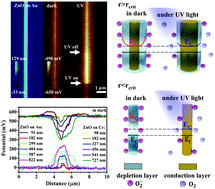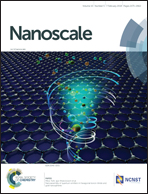Clarifying the high on/off ratio mechanism of nanowire UV photodetector by characterizing surface barrier height
Abstract
The response of semiconductor nanowire UV sensors represented by ZnO nanowire UV sensor is usually explained by the adsorption and desorption of oxygen molecules, but with the great increase of these sensors’ on/off ratio in recent years, this explanation is inadequate and the inner mechanism for the large on/off ratio urgently needs to be explored. Here, the distribution of carrier concentration in a ZnO nanowire is found to be determined as a function of the radius of the nanowire, using a calibrated surface photovoltage method and space charge model. A critical radius is indicated which determines the carrier concentration and photoresponse behavior of the nanowire. When the radius is below this critical value, the carrier concentration in the dark decreases dramatically compared with that of the nanowire under UV light illumination. Specifically, a decrease of carrier concentration by 4–5 orders of magnitude occurs when the radius is below 50 nm, which causes the on/off ratio to vary by the same orders of magnitude. When the radius is above the critical value, the influence of radius on carrier concentration is nonsignificant and the on/off ratio is below 100. Finally, we found that the high on/off ratio of the ZnO nanowire should be ascribed to the complete depletion of the nanowire led by the interplay of radius and surface band bending rather than the change in width of the depletion layer as most papers have suggested.



 Please wait while we load your content...
Please wait while we load your content...